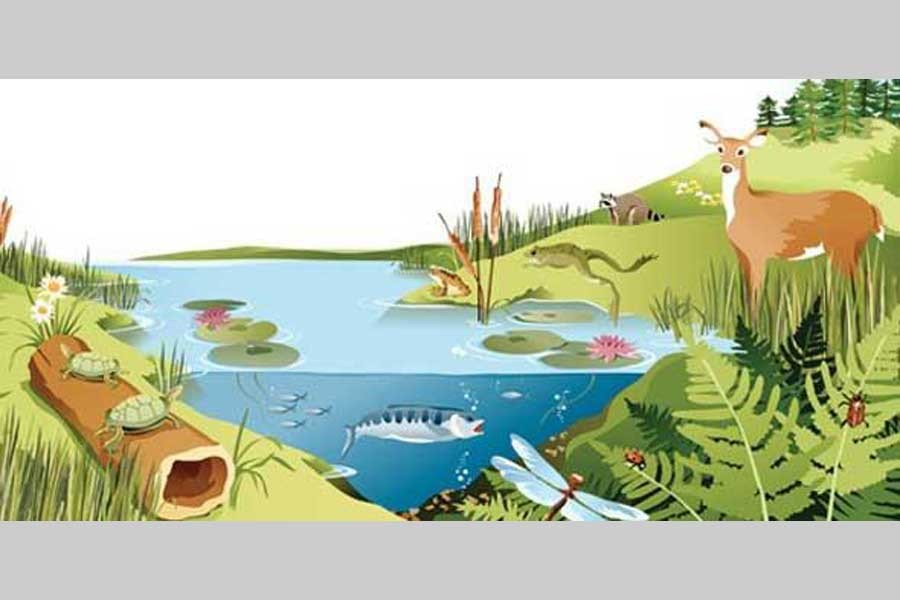Like any other country of the world, Bangladesh features both favourable and unfavourable ecosystems. The unfavourable or the fragile ecosystems occupy a substantial proportion of land and population in Bangladesh. For example, the flood-prone ecosystem accounts for roughly one-third of the population as well as land area. The saline coast absorbs roughly one-fifth of the population and land. Thus two-thirds of the population and land areas are located in adverse ecology. This possibly points that, if the fragility of the ecosystem affects household income adversely, then giving higher priority to development interventions for these ecologies can help substantial improvement in food security and nutrition at the national level.
A household-level panel data provides some striking features. The most dramatic change in income structure occurs in coastal zones where, in the 1980s, agriculture comprised roughly 60 per cent of household income but the share almost halved in recent periods. Special mention may be made of income from rice that drastically reduced, whereas income from rice was an important source long time back. On the other hand, the share of non-agricultural income rose from about 56 to 70 per cent during the same period of time. The share of remittance income also shot up from about 8 per cent to about 30 per cent over time. It may be mentioned that such changes also happened in other zones but not as sharply as in coastal zones.
The growth of household-level per capita income grew at 3.0 per cent in favourable and coastal zones in the early decades but only at 1.0 per cent in flood-prone zones. In recent periods, per capita income rose by over 1.0 per cent in all zones. Over a long-term period, per capita income growth exceeded 4.0 per cent. At disaggregated level, agricultural income grew at negative rates in all areas during 1988-2000 but picked up quite well during 2000-2014. This means that the improvement in growth rates of per capita income can be adduced mostly to the growth of non-agricultural income.
Available data show that both flood-prone and coastal ecosystems have substantial lower, even negative rates of agricultural income. But the households in the coastal ecosystem cover most of the disadvantages through higher non-farm incomes from higher non-land fixed assets, higher educated workers, and higher incidence of overseas migration of the workers. So, the difference in household income is only marginal. In the flood-prone ecosystem, the non-agricultural income is also lower compared to the favourable ecosystem. The households in the flood-prone ecosystem also avail of the opportunities of overseas migration compared to favourable ecosystem, but to a much less extent than the households in the coastal ecosystem.
It is assumed that household income will depend on the endowment of land, renting of land from the tenancy market, the value of agricultural and non-agricultural fixed assets, the number of earning members and their level of schooling. The female-headed households may have a disadvantage and earn less, while households receiving remittances from migrant members within the country and overseas will have higher income. The variable "access to electricity" was introduced to assess the effect of development of infrastructure. In fact the villages which have electrification also have connections to paved roads. The regression model helps to assess the effect of unfavourable ecologies which are introduced in the model as dummy variables after dissociating the effect of variations in factor endowments, infrastructure development, and migration of members that should be independent of the agro-ecology.
The model explains 69 per cent of the variation in income among sample households. The coefficients of all variables are statistically significant, except the female headships and the households having migrant members working within the country. The female-headed households is now a mixed bag consisting of widows and separated women, as well as women taking management responsibility after their husbands migrated to work in towns and overseas. The latter group is economically better off than the former.
The value of the coefficient shows that a household earns on the margin US$ 1298 from an acre of land under its ownership. If the land is rented, the return is lower by 20 per cent due to the payment of rent to the landowner. The rate of return on capital is about is 28 per cent in agriculture and 24 per cent in non-agriculture. A male worker earns on the margin of US$577 (US$ 2.22) per day assuming employment of five days a week. A female worker earns 20 per cent less than a male worker. A year of schooling gives a return of US$ 64 for the male worker and US$ 85 for the female worker. If the household has a relative working abroad, the remittance sent augments household income by US$2,356 (also 98 per cent of average household income).
The coefficient of the variables representing fragile environment are negative. A household living in the flood-prone ecosystem earns on the margin US$ 394 (16 per cent) less than a household living in a favourable environment. For the households in the coastal saline environment the income is lower by US$ 447 (19 per cent). Thus the null hypothesis that household income is equal across agro-ecology is not validated by data.
Abdul Bayes is a former Professor of Economics at Jahangirnagar University.


